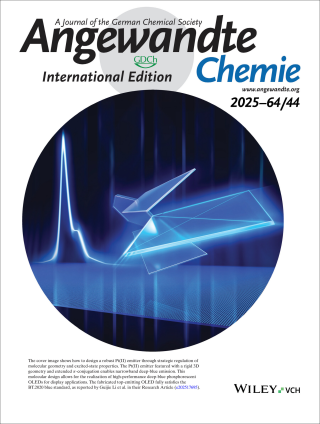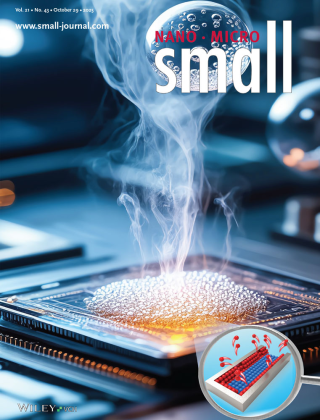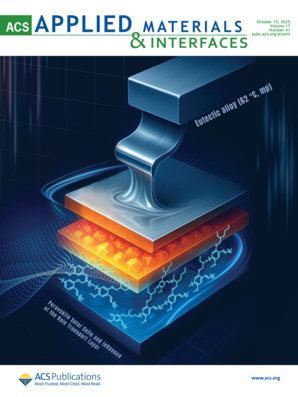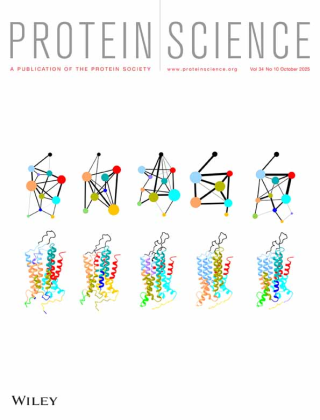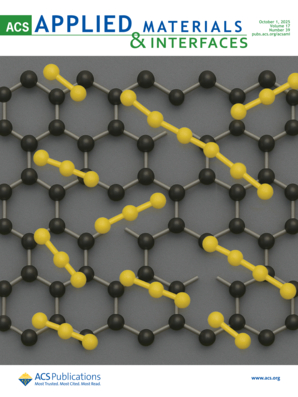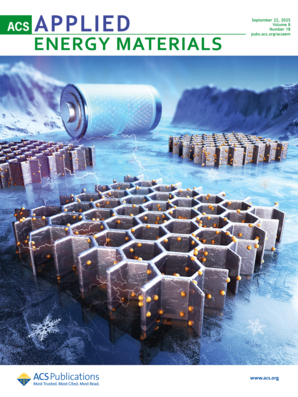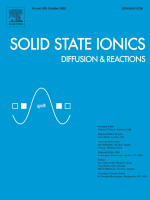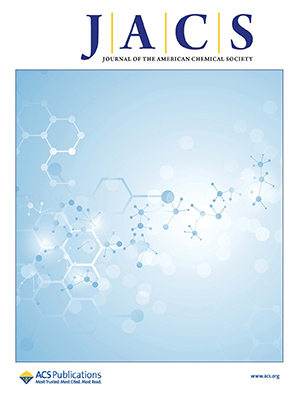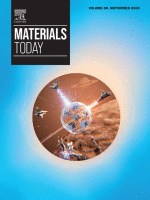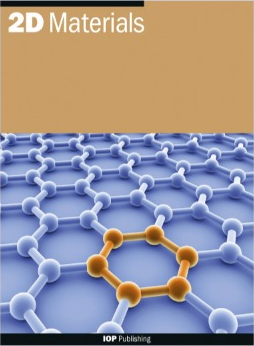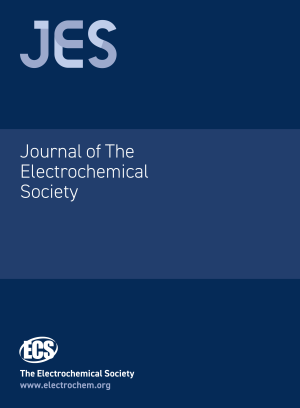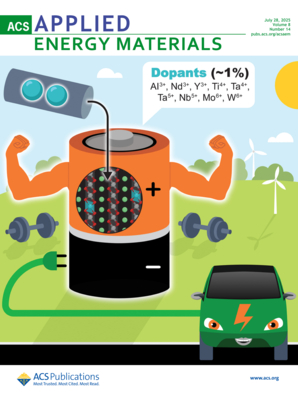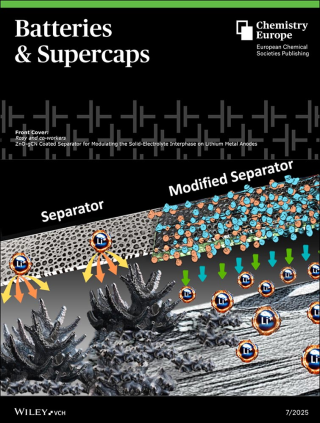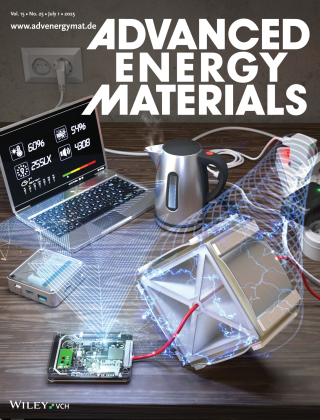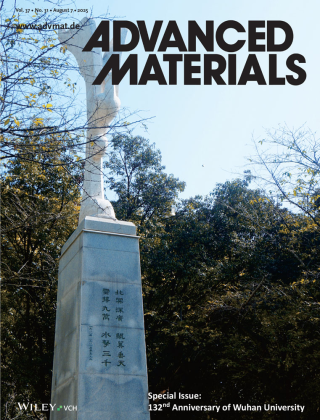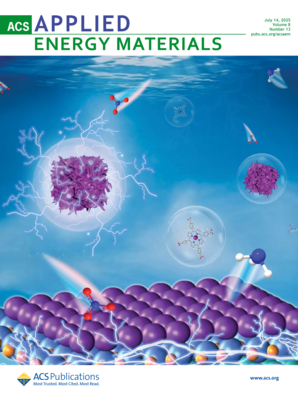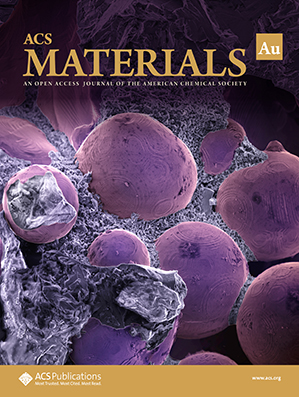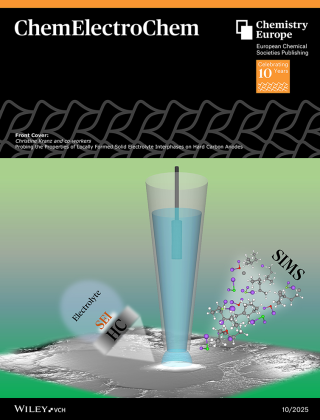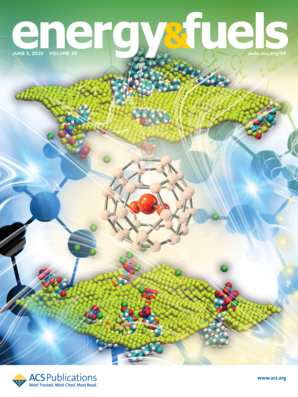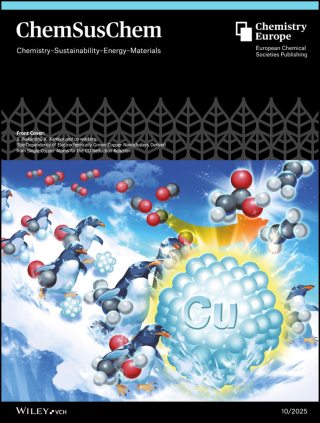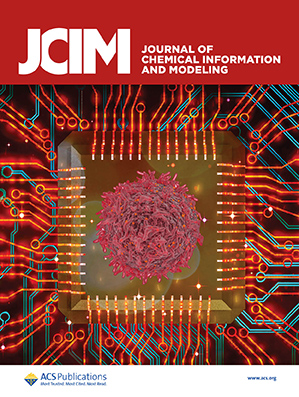-
Breaking the Linear Scaling Relations for the Oxygen Reduction Reaction with a Dual-Atom Catalyst Composed of a MnFe-Porphyrrole Aerogel
Bimetallic catalysts offer enhanced catalytic performance through synergistic interactions between the two metals, allowing them to break the linear scaling relations and reach high electrocatalytic activity. This study presents bimetallic aerogel-based catalyst synthesized as a covalent, three-dimensional framework containing neighboring iron and manganese sites. The
Eliana Lebowitz, Prasenjit Das, Łukasz Kielesiński, Leigh Peles-Strahl, David A Cullen, Ilya Grinberg, Daniel T Gryko, Lior Elbaz -
Anode-Less Sulfide-Based All-Solid-State Batteries: Interfacial Challenges, Material Strategies, and Future Prospects
Anode-less sulfide-based all-solid-state batteries (ASSBs) have emerged as promising candidates for next-generation energy storage, offering high energy density, enhanced safety, and simplified cell design. By eliminating excess lithium (Li) metal and relying solely on Li extracted from the cathode, these systems significantly improve gravimetric and volumetric performance
Mamta Sham Lal, Paul Albertus, Malachi Noked -
Maximizing Areal Capacity in All-Solid-State Li-Ion Batteries Using Single Crystalline Ni-Rich Cathodes and Bromide-Based Argyrodite Solid Electrolytes Under Optimized Stack Pressure
All-solid-state lithium-ion batteries (ASSLBs) are a promising next-generation energy storage technology for their enhanced safety and high energy density. In this study, we develop high-performance ASSLBs utilizing a Ni-rich single-crystalline NCM811 (SC-NCM811) cathode and a Li6PS5Br argyrodite solid electrolyte. By optimizing the cathode material and stack pressure
Mamta Sham Lal, Arka Saha, Malachi Noked -
The initial dynamics of product release in terpene synthases—The case of CotB2
Although the enzymatic mechanisms of terpene synthases have been extensively characterized through experimental and computational studies, the atomistic details underlying the product release process have remained elusive. In this study, we present the first atomistic simulations of the initial stages of product release in a terpene synthase, using the bacterial diterpene
Prashant Kumar Gupta, Carl P O Helmer, Marion Ringel, Bernhard Loll, Thomas Brück, Dan Thomas Major -
Artificial Solid Electrolyte Interphase Developed In Vitro by Tailoring Molecular Layer Deposition of a Li-Ion-Containing Electrolyte on Carbonaceous Anode Materials
Various carbonaceous anode materials have been developed to improve both the rate and capacity characteristics of Li-ion batteries (LIBs), and yet the performances of the anodes depend on the quality of the inevitable and uncontrollable growth of the solid–electrolyte interphase (SEI), resulting from the electrolyte reduction and decomposition during the initial cycles
Roman G Fedorov, Jonas Schlaier, Nickolay Solomatin, Mahmud Auinat, Igor Baskin, Christian Heubner, Alexander Michaelis, Yair Ein-Eli -
Nickel Vanadium Oxyphosphide Nanosheets with Synergistic Metal–Phosphide Interfaces for Fast and Durable Lithium Storage
Achieving high capacity, long-term stability, and fast charge–discharge capability remains a central challenge in the development of advanced anode materials for lithium-ion batteries. In this work, we present nickel vanadium oxyphosphide (NVOP) nanosheets synthesized via controlled thermal phosphorization of NiV-layered double hydroxide (NiV-LDH). The resulting multiphase
Vivek Kumar Singh, Idan Bar-lev, Keren Shwartsman, Srijith, Debabrata Mandal, Munseok S Chae, Jeffrey D Henderson, Mark C Biesinger, Bibhudatta Malik, Gilbert Daniel Nessim, Daniel Sharon -
Guide for characterizing polymeric electrolytes in rechargeable solid-state Li and Na batteries
Solid polymer electrolytes (SPEs) present a promising alternative for rechargeable batteries with aprotic liquids. Although SPEs were extensively researched for several decades, recent studies have gained momentum in response to growing demand for safer battery options. While various electrochemical and spectral methods for characterizing polymeric electrolytes were
Miryam Fayena-Greenstein, Gayathri Peta, Hadas Alon Yehezkel, Nagaprasad Reddy Samala, Ortal Breuer, Yuval Elias, Guoxiu Wang, Doron Aurbach -
A Biomimetic Twisting Strategy Enables Efficient Electrocatalytic Oxidation of Energy-Dense Hydrazine Hydrate on FeN2+2C4+4 Sites
Electrocatalytic hydrazine oxidation holds great promise for enabling fuel cell-powered transportation since hydrazine hydrate (N2H4·H2O) has the highest energy density of all liquid, CO2-free fuels (3.45 kWh/L), and the highest fuel cell voltage (1.56 V vs O2). Inspired by the ruffling of catalytic centers in oxidative enzymes, we designed a twisted single-atom nanozyme
Inbal Offen-Polak, Nagaprasad Reddy Samala, Tomer Y Burshtein, Syeda Mushrifa Zahan, Shuting Xiang, Yair Shahaf, Chen Studnik, Lingmei Ni, Mario U Delgado-Jaime, Ulrike I Kramm, Dario R Dekel, Charlotte Vogt, Anatoly I Frenkel, Ilya Grinberg, David Eisenberg -
Towards eco-friendly batteries: high temperature baking of carbonaceous (MCMB) Li-ion anodes containing advanced water-based natural polymer binders results in superior performance
Replacing common polymeric binder materials in lithium-ion batteries (LIBs) with more sustainable and environmentally friendly options is one of the challenges in designing new generations of LIBs. Here, we explain how incorporating protein-based polymers into the binder formulation can enhance binder performance in the graphite anode of LIBs. The electrode preparation
Maisam Nassar, Katerina Bogomolov, Ekaterina Grishina, Yair Ein-Eli, Nadav Amdursky -
Covalency modulation in Co-free high entropy cathodes for enhanced stability and performance in sodium-ion batteries
Sodium-ion batteries are progressively scrutinized for their economic viability and natural abundancy of resources. However, their practical implications are hampered by their limited energy density, primarily stemming from cationic redox reactions in transition-metal based cathodes. Achieving higher energy density via anionic redox activation is one of the promising
Akanksha Joshi, Mia Ramos, Sri Harsha Akella, Khorsed Alam, Roman R Kapaev, Sankalpita Chakrabarty, Nicole Leifer, Ananya Maddegalla, Yuri Mikhlin, Doron Aurbach, Dan Thomas Major, Malachi Noked -
LixSiyOz coating for LiCoO2 cathode material using atomic layer deposition (ALD)
With a high theoretical capacity of 274 mAh, LiCoO2 (LCO) is commonly used as a cathode material in portable devices and different Li-ion batteries (LIBs) applications. However, its practical capacity is lower than the theoretical value due to interfacial degradation pathways that limit the cathode operating voltage. In this work, we demonstrate an advanced and efficient
Orly Aminov, Amreen Bano, Ortal Lidor-Shalev, Moriah Perry, Dan Thomas Major, Malachi Noked -
Anion-Exchange-Membrane Electrolysis with Alkali-Free Water Feed
Hydrogen is a green and sustainable energy vector that can facilitate the large-scale integration of intermittent renewable energy, renewable fuels for heavy transport, and deep decarbonization of hard-to-abate industries. Anion-exchange-membrane water electrolyzers (AEM-WEs) have several achieved or expected competitive advantages over other electrolysis technologies
Mohsin Muhyuddin, Carlo Santoro, Luigi Osmieri, Valerio C A Ficca, Ariel Friedman, Karam Yassin, Gioele Pagot, Enrico Negro, Anastasiia Konovalova, Grace Lindquist, Liam P Twight, Minkyoung Kwak, Enrico Berretti, Vito Di Noto, Frederic Jaouen, Lior Elbaz, Dario R Dekel, Piercarlo Mustarelli, Shannon W Boettcher, Alessandro Lavacchi, Plamen Atanassov -
High-Performance Carbon-Based Supercapacitors
Carbon-based supercapacitors (SCs) have emerged as promising candidates for high-power, fast-charging energy storage, bridging the performance gap between traditional capacitors and batteries. This perspective explores the current landscape and future direction of carbon-based electric double-layer capacitors (EDLCs), focusing on activated carbon, graphene, and their
Ivan Dědek, Veronika Šedajová, Vojtěch Kupka, Tomáš Zedníček, Luca Primavesi, Doron Aurbach, Malachi Noked, Michal Otyepka -
Boosting rate capability and cycling stability of lithium-ion batteries with high-mass-loading electrodes via printable graphene on separators
While high-mass-loading electrodes are desirable for achieving high energy density of lithium-ion batteries, their large thickness restricts charge transport, compromising electrochemical performance. Here, we introduce stencil-printable graphene on separators for lithium-ion batteries with high-mass-loading electrodes. Graphene nanoflake inks are formulated with
Yuxing Gu, Jian Du, Yair Ein-Eli, Woo Jin Hyun -
Influence of O2 on Zinc Electrodeposition in Batteries with Near-Neutral Electrolytes
Rechargeable aqueous Zn-based batteries represent a family of promising energy storage and load leveling technologies due to their safety and low production cost. However, the reversibility of Zn metal electrodeposition is challenged by the non-uniformity of deposition, and by the electrochemical constraints of metals in water-based electrolyte solutions. This research
Shay Asher Elmakies, Malachi Noked, Roman R Kapaev -
Doping Strategies in Ni-Rich NCM Cathode Materials for Next-Generation Li-Ion Batteries: A Systematic Computational Study
Layered lithiated oxide cathode materials with mixed transition metals (TMs), such as Ni–Co–Mn (NCM), are the workhorses of Li-ion batteries in the current electric vehicle industry. Among NCM cathodes, Ni-rich (Ni >50% of all TMs) variants can provide high capacities of ∼220 mAh/g, but they suffer from faster capacity fading than their low Ni-content NCM counterparts
Arup Chakraborty, Amreen Bano, Sooraj Kunnikuruvan, Boris Markovsky, Doron Aurbach, Dan Thomas Major -
Multidopant Induced Entropy Effect on TiS2/TiSe2-Based Layered Anode and Formation of Electrode–Electrolyte Interphase
Van der Waals (vdW) heterostructures (HSs) have attracted intense interest worldwide as they offer several routes to design materials with novel features and wide-ranging applications. Unfortunately, vdW HSs are currently restricted to a small number of stackable layers due to the weak vdW forces holding adjacent layers together. In this article, computational studies
Amreen Bano, Dan Thomas Major -
Fe-N-C in Proton Exchange Membrane Fuel Cells: Impact of Ionomer Loading on Degradation and Stability
Fe single atoms in N-doped C (Fe-N-C) present the most promising replacement for carbon-supported Pt-based catalysts for the O2 reduction reaction at the cathode of proton exchange membrane fuel cells (PEMFCs). However, it remains unclear how the I/C ratio affects Fe-N-C degradation and the stability of single Fe atom active sites (FeNx). Here, an accelerated stress
Angus Pedersen, Rifael Z Snitkoff-Sol, Yan Presman, Laetitia Dubau, Rongsheng Cai, Jesús Barrio, Sarah J Haigh, Frédéric Maillard, Ifan E L Stephens, Maria-Magdalena Titirici, Lior Elbaz -
Fluoroether Design Enables High-Voltage All-Solid-State Lithium Metal Batteries
Developing high-voltage all-solid-state lithium metal batteries (ASSLMBs) holds transformative potential for next-generation energy storage technologies but remains a formidable challenge. Herein, a new prototype design is presented that integrates fluorinated ether segments into the traditional oxide nanocomposite phase, enabling poly(ethylene oxide)-based composite
Yong Chen, Xu Yang, Tianyi Wang, Xiao Tang, Dongfang Li, Shijian Wang, Yaojie Lei, Yu Han, Shimou Chen, Michel Armand, Doron Aurbach, Guoxiu Wang -
Dual Atom Catalysts for the Oxygen Reduction Reaction: The Undisputable, the Controversial, and the Misleading
Electrocatalysis of the oxygen reduction reaction (ORR) is critical for energy generation in the scheme of the hydrogen economy. Scientists have been trying to replace platinum group metal (PGM) catalysts for this reaction with PGM-free catalysts to lower the cost of fuel cells. In the past decade, significant attention has been given to the design and synthesis of dual
H Klein, Lior Elbaz -
Elucidation of Negative Loops in the Impedance Spectrum of a Contaminated Polymer Electrolyte Membrane Fuel Cell
The electrochemical impedance spectroscopy (EIS) technique is applied to study the effect of NOx contamination on polymer electrolyte fuel cells (PEMFCs). The analysis is done by finding the underlying distribution function of relaxation times (DFRT, a.k.a. DRT) utilizing impedance spectroscopy genetic programming (ISGP). NO2-contaminated PEMFCs generate negative loops
Sourav Bhowmick, W Khalaily, Lior Elbaz, Yoed Tsur -
The Effect of Sulfur Vacancy Distribution on Charge Transport across MoS2 Monolayers: A Quantum Mechanical Study
Molybdenum disulfide (MoS2) monolayers are two-dimensional materials belonging to a family of materials called transition metal dichalcogenides which have been widely studied as potential semiconductors for next-generation ingredients in transistor technology. Electronic devices’ performance is largely influenced by defects, and in the case of MoS2, the most dominant
Hanna Kuperman Benedik, Naomi Rom, Maytal Caspary Toroker -
Concurrent Operando Neutron Imaging and Diffraction Analysis Revealing Spatial Lithiation Phase Evolution in an Ultra-Thick Graphite Electrode
Energy-efficient, safe, and reliable Li-ion batteries (LIBs) are required for a wide range of applications. The introduction of ultra-thick graphite anodes, desired for high energy densities, meets limitations in internal electrode transport properties, leading to detrimental consequences. Yet, there is a lack of experimental tools capable of providing a complete view
Markus Strobl, Monica E Baur, Stavros Samothrakitis, Florencia Malamud, Xiaolong Zhang, Patrick K M Tung, Søren Schmidt, Robin Woracek, Jongmin Lee, Ryoji Kiyanagi, Luise Theil Kuhn, Inbal Gavish Segev, Yair Ein-Eli -
Synthesis of MgCl+ and Mg2+ Cation Based Novel Electrolytes: Impact of Polydentate Ethers
The development of efficient electrolytes is crucial for advancing magnesium (Mg) batteries, which hold promise for next-generation energy storage systems. Previously, electrolytes such as [Mg2(μ-Cl)3 ⋅ 6THF]+ [Ph4Al]−, A, and [Mg2(μ-Cl)3 ⋅ 6THF]+ [Ph3AlCl]−, B, have been studied, but their performance has been limited by issues related to ion dissociation and
Yogendra Kumar, Ben Dlugatch, Ananya Maddegalla, Yuri Glagovsky, Natalia Fridman, Sri Harsha Akella, Nicole Leifer, Doron Aurbach, Dmitry Bravo-Zhivotovskii, Malachi Noked -
Suppressed Voltage Decay of Li-Rich Li1.2Ni0.13Mn0.54Co0.13O2 Electrodes through Delayed Spinel-Phase Formation for Lithium-Ion Batteries
Despite possessing a high gravimetric capacity above 230 mAh g–1, Li-rich NMC oxides suffer from the bottleneck of capacity fading and a decrease in the discharge voltage upon cycling. Therefore, suppressing the discharge voltage decay is a major concern for employing these cathodes in Li-ion cells. To understand the structural change during initial cycles, the ex-situ
Dhatshanamoorthy Boopathi, Diptikanta Swain, Boris Markovsky, Doron Aurbach, Prasant Kumar Nayak -
Will Iron Forge the Future of Metal-Air Batteries in Grid Scale Energy Storage?
The community is exploring sustainable alternatives for grid-scale energy storage. Besides lithium-ion batteries (LIBs), such technologies with a focus on sustainability aspects offer only a limited solution for grid-scale energy storage. Rechargeable metal-air batteries (MABs) based on affordable abundant multivalent metal anodes in aqueous medium provide promising
Katerina Bogomolov, Yair Ein-Eli -
Template-Based Docking Using Automated Maximum Common Substructure Identification with EnzyDock: Mechanistic and Inhibitor Docking
EnzyDock is a multistate, multiscale CHARMM-based docking program which enables mechanistic docking, i.e., modeling enzyme reactions by docking multiple reaction states, like substrates, intermediates, transition states, and products to the enzyme, in addition to standard protein–ligand docking. To achieve docking of multiple reaction states with similar poses (i.e.
Renana Schwartz, Amit Hadar-Volk, Kwangho Nam, Dan Thomas Major
